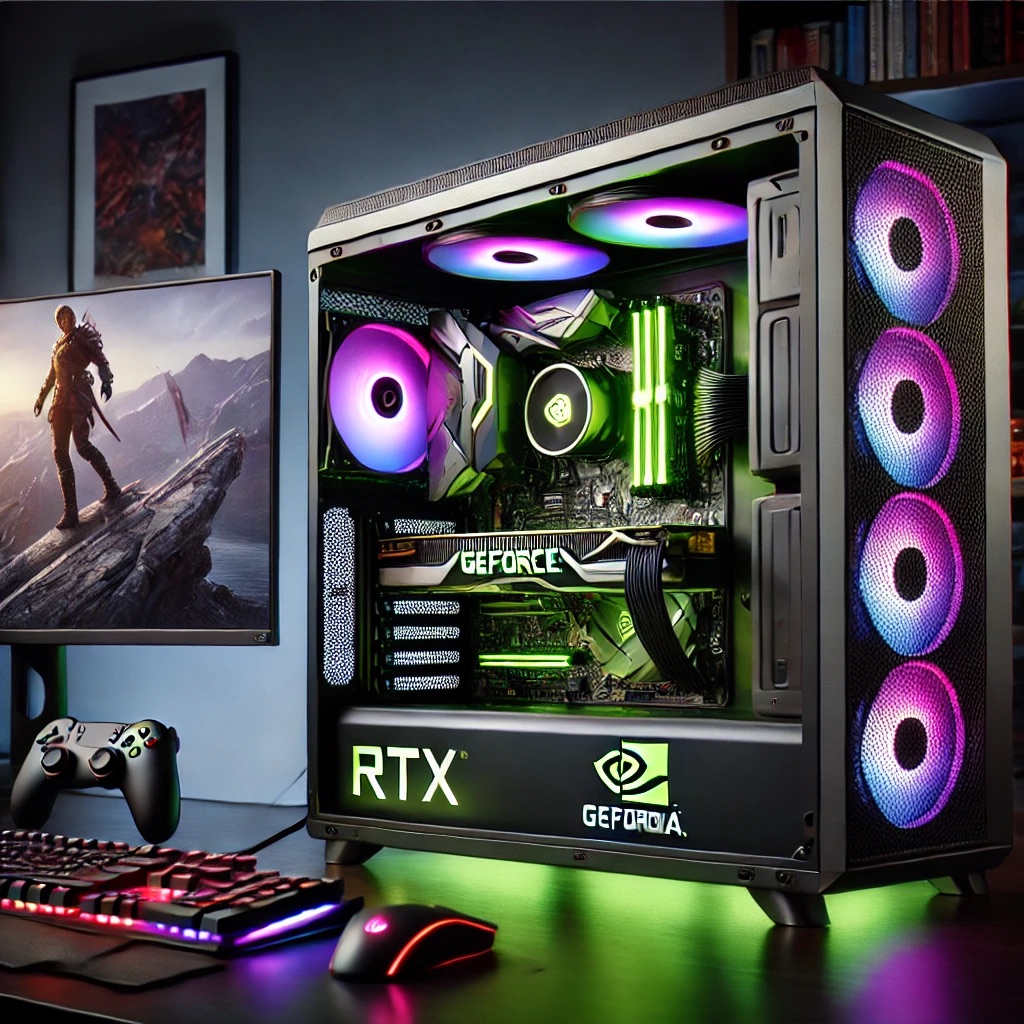Nvidia is set to revolutionize the gaming and graphics industry once again with the upcoming release of the GeForce RTX 50-Series GPUs, codenamed Blackwell. These new graphics cards promise to deliver significant performance enhancements, advanced features, and groundbreaking technologies that will elevate gaming and professional workloads to new heights. In this article, we’ll dive into the key features of the RTX 50-Series, compare them with the previous generation, and explore why they are generating so much excitement in the tech community.
Key Features of Nvidia GeForce RTX 50-Series GPUs
1. Advanced Memory Interface
The RTX 50-Series GPUs will utilize the latest GDDR7 memory, offering unparalleled bandwidth and performance.
- Memory Bandwidth: Up to 1728 GB/s with a 384-bit GDDR7 interface, significantly higher than the RTX 4090’s bandwidth.
- Efficiency: Improved memory efficiency thanks to a large L2 cache, reducing the need for frequent memory access.
2. Enhanced Ray Tracing and AI Capabilities
Nvidia continues to push the boundaries of ray tracing and AI performance with the Blackwell architecture.
- Ray Tracing: Increased ray tracing throughput to support the latest games and applications with full path tracing capabilities.
- AI Performance: Reworked tensor cores with native support for FP4 and FP6 formats, enhancing AI inference capabilities.
3. Power Efficiency and Thermal Management
Despite the increased performance, the RTX 50-Series GPUs are designed to be more power-efficient.
- Power Consumption: Optimized for better performance-per-watt, making them suitable for high-performance gaming rigs and workstations.
- Cooling Solutions: Advanced cooling solutions to manage the thermal output, ensuring stable performance under heavy loads.
Comparison with Previous Generations
To better understand the advancements of the RTX 50-Series, let’s compare them with the RTX 40-Series (Ada Lovelace architecture).
RTX 50-Series vs. RTX 40-Series
RTX 40-Series (Ada Lovelace):
- Memory Interface: Up to 384-bit GDDR6X.
- Ray Tracing: Introduced Shader Execution Reordering (SER) and Opacity Micro-Maps (OMM).
- Performance: Excellent gaming and AI capabilities, but limited by the older memory and processing technology.
RTX 50-Series (Blackwell):
- Memory Interface: Advanced GDDR7 with higher bandwidth and efficiency.
- Ray Tracing: Further improvements in ray tracing performance and new AI-driven rendering techniques.
- Performance: Significant boosts in both gaming and AI tasks, with better power efficiency.
User Reviews and Initial Feedback
Although the RTX 50-Series GPUs are not yet available, early leaks and benchmarks have generated considerable buzz. Enthusiasts and professionals are eagerly anticipating the enhanced performance and advanced features these GPUs promise. The potential for higher memory bandwidth and improved ray tracing capabilities are particularly exciting for gamers and content creators alike.
Conclusion
The Nvidia GeForce RTX 50-Series GPUs are poised to set a new standard in the graphics card market. With advanced memory technology, enhanced ray tracing, and AI capabilities, these GPUs will cater to the needs of both gamers and professionals. Whether you’re looking to upgrade your gaming setup or enhance your professional workflow, the RTX 50-Series GPUs are worth considering for their impressive performance and efficiency.
